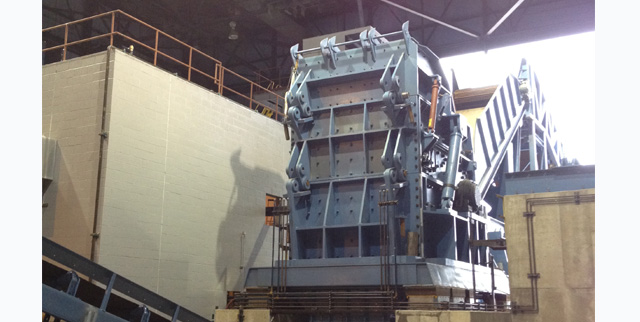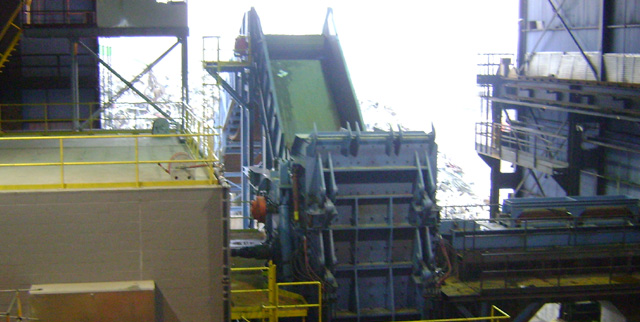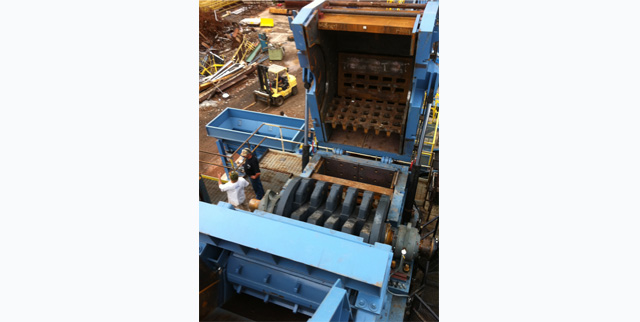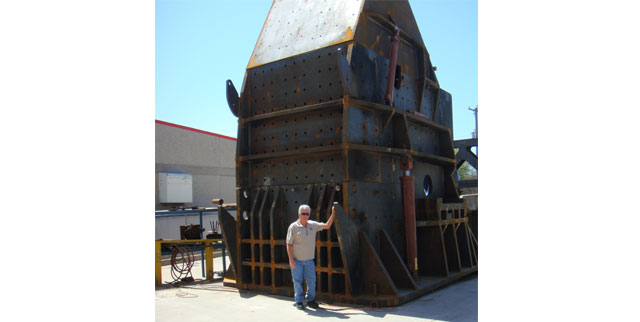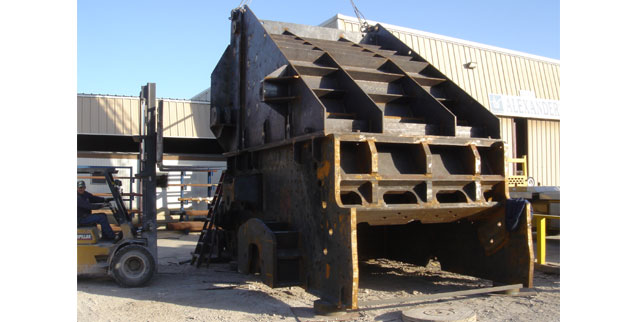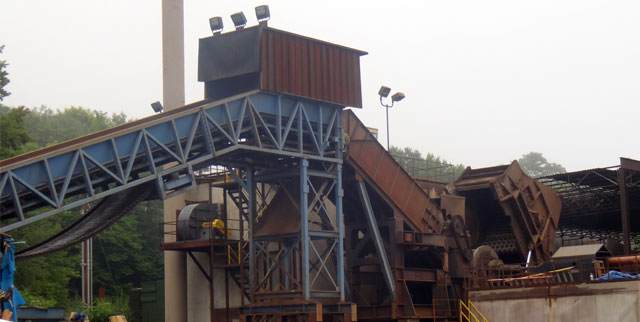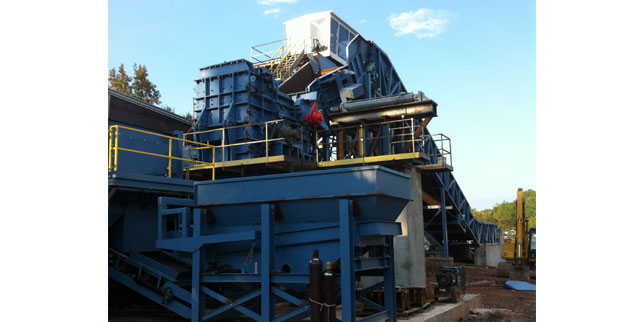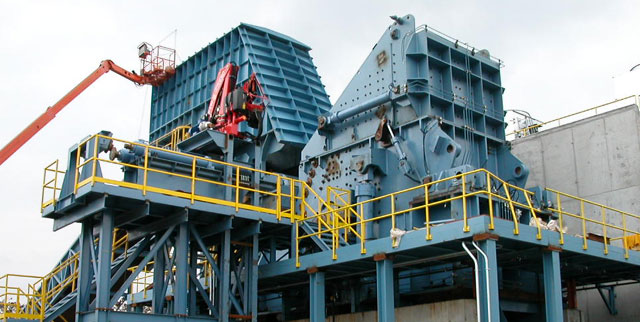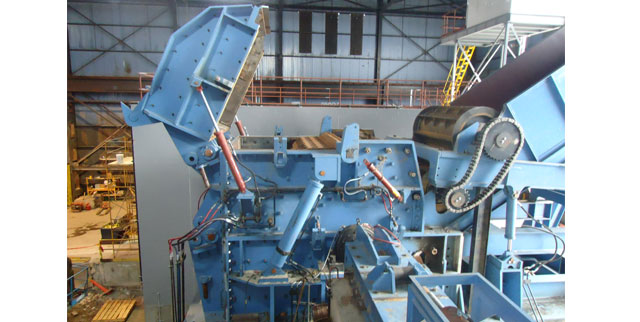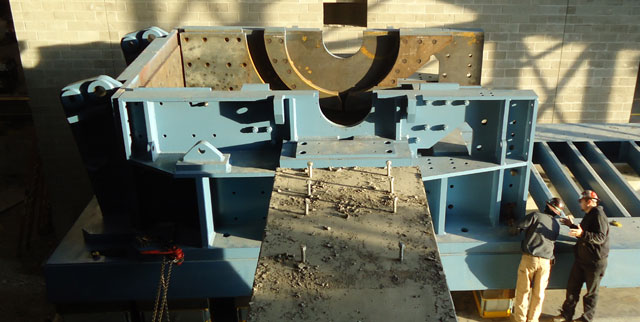SHREDDERS
Hammermills International is the exclusive licensed manufacturer of Metpro Hammermill shredder design!
The“Hammermills/METPRO” Shredder is able to shred heavier mixed grades of material efficiently, to a high quality, at a low cost and with a high recovery of non-ferrous material.
The simplicity of construction, the parts used, and the design allow high (90% +) rates of production, continuity, and easy maintenance during shutdown periods. The basic concept of the “Hammermills/METPRO” Shredder has been tried and proven since 1960 and subsequent developments have improved the production rate and running costs.
There are a number of advantages which the “Hammermills/METPRO” Shredder offers over many of its competitors. These relate to several special features, including:
• hydraulically operated infeed rolls• the position of the cutter bar
• the grates
• the ejection door
• the spider rotor
• the design of the shredding chamber
• the new drive system
• the processing of heavy no.1 and no.2 scrap
• ease of maintenance
HYDRAULIC OPERATED INFEED ROLLS
They lead to a smoother feed and are automatically controlled via amperage sensors on the main drive motor, which will slow the feed to the shredder when the load on the motor become too great. The material is thus controlled as it enters the shredder and the load on the main motor is consistent rather than fluctuating, thereby saving electrical costs. The new shredders have a redesigned feeder which has been improved and strengthened. The efficiency of the feed is now even better and scrap spillage has been eliminated.
THE HIGH AND ADJUSTABLE CUTTING BAR
It gives a cleaner, smaller, denser finished product and ensures that a greater proportion of the feed material is broken or cut prior to entering the shredding chamber. This means that there is greatly reduced wear per ton processed within the shredder and particularly on the grates and although there is a higher concentration of wear at the point of entry, there is overall less maintenance per ton.
THE GRATES
The larger grate discharge area (bottom, back and top) increased the throughput of material and relieves any potential congestion within the shredder. The “Hammermills/METPRO” shredder has discharge grates where competitors have wear plates. They are also heavier, so that there is no need for a central support. This allows the grates to be relatively free, making a change to different size holes or configuration a much easier job.
In order to process heavy no.1 and no.2 scrap, we offer heavier but standard designed tangential grates, with the ability to block off completely or vary the grate openings hydraulically. The option of larger sized openings allows quicker and easier shredding of the heavier grades and can be hydraulically adjusted by the operator. This all assures that the heavy material is in the shredding chamber for the minimum amount of time, avoiding wear.
THE EJECTION DOOR
The position of the reject door ensures the automatic ejection of unshreddables, reducing the time that they are in the mill causing wear and damage. Unshreddable material is carried around by the rotor and thrown upwards as with normal top discharge. The door is free to open under such force, so that the greater the force (i.e. the larger the unshreddable), the more likely that the unshreddable item will be ejected immediately and without intervention by the operator, although this is always the second option. The reject door also acts as a relief valve if overfeeding of the shredder through operator error occurs, thus reducing the incidence of main motor trip out through internal congestion.
THE SHREDDING CHAMBER
Regarding the shredding chamber, our competitors offer a design of fully lined bolted wear plates. These bolts often break under heavy shredding conditions and the wear plates fall loose into the shredding chamber. We offer:
- Increased thickness of general housing fabrication and abrasive resistant wear plates.
- Liner wear plates are only mounted on the side walls within the shredding chamber. Our roof bars are of cast manganese material, held in place with external tie bars which in addition to making replacement a simple task, also removes the risk of those bars falling into the shredder.
- Any abrasive resistant wear plates are mounted on pads away from the fabricated housing, thereby eliminating the direct transfer of distortion and mechanical stresses, including explosion shocks into the general structural fabrication.
THE SPIDER ROTOR
The spider rotor is heavy and robust and assures 100% cutting across the feed opening with the minimum amount of hammers. Our competitors offer full disc rotors which allow no relief for oversize unshreddable material. They recommend either high cost replacement wear plates or continuous repairs by welding. They also recommend fewer hammers, yet the number of hammers multiplied by the width of the hammer gives the actual cutting area. The basic design of the disc rotor can never achieve 100% cutting as with the “Hammermills/METPRO” spider design.
There are four rows of hammer pins allowing for varied placing of each hammer unit and the customer can determine the number of hammers per row. The 100% cutting action occurs every revolution. The rate of cutting action increases as the number of hammers is increased. At the maximum hammer fitment, the full width cutting occurs twice every revolution of the rotor and gives a very small, dense particle of shredded product, which has a high level of cleanliness and allows a high rate of non-ferrous recovery.
Independently mounted wear caps on the cutting side of the spider eliminate the need for costly welding repairs and are easily replaced.
The design of the rotor also reduces the friction of material between the rotor and the grates, reducing in turn the load on the main driver motor and, therefore, the KWH per ton of material produced. The full disc rotors supplied by our competitors have a reduced cutting area and no relief and, therefore, always present a full face against the incoming scrap causing a friction brake effect and creating a higher loading on the main motor and thus increasing the KWH/ton. In addition, in response to our maintenance experience we have added a new sealing arrangement to the rotor to prevent oil loss and redesigned the retainers for the end caps so that they are easier to change.


